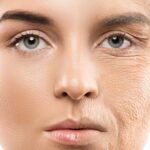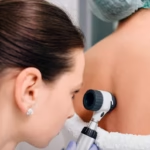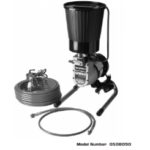Navigating the changes that come with menopause can feel overwhelming, but understanding the process is the first step toward managing its effects. Menopause is a natural biological transition that marks the end of menstrual cycles. Many people experience a range of physical and emotional symptoms during this time. Gaining knowledge about what is happening in your body can empower you to find effective ways to manage your symptoms and maintain your quality of life.
What Is Menopause?
Menopause is a point in time 12 months after a person’s last menstrual period. It is not an illness or a medical condition, but a natural part of the aging process. The years leading up to that point, known as perimenopause, are when many people begin to notice changes. During this phase, the ovaries start producing less estrogen and progesterone, the main hormones that regulate menstruation.
This hormonal shift is the root cause of the symptoms associated with menopause. The decline in estrogen levels affects various parts of the body, including the reproductive system, brain, and skin. This transition occurs in every person with ovaries, although the experience and timing can vary significantly from one individual to another.
When Do Symptoms Typically Begin?
Symptoms often start during perimenopause, which can begin in a person’s 40s but sometimes earlier. The first signs are often changes in the menstrual cycle, such as irregular periods or changes in flow and cycle length. Other common early symptoms include hot flashes, night sweats, difficulty sleeping, mood changes, vaginal dryness, or brain fog. Tracking these changes can provide useful information for discussions with your healthcare provider.
How Does Hormone Therapy Help?
Hormone therapy (HT) effectively eases menopausal symptoms by replacing hormones your body no longer produces. It’s conducive for managing moderate to severe symptoms, such as hot flashes. Remember, HT comes in various types and dosages, and a plan tailored specifically for you will provide the best results.
- Estrogen therapy: This is the most effective treatment for relieving hot flashes and night sweats. Estrogen can also help ease vaginal dryness, itching, and burning. It is available in various forms, including pills, patches, gels, and sprays.
- Progestin therapy: Progestin is often prescribed along with estrogen for those who still have their uterus. This combination helps to protect the uterine lining. It is available in pill, patch, and intrauterine device forms.
- Combination therapy: This therapy combines estrogen and progestin in one treatment. It is available as a pill or a patch.
Hormone therapy can provide significant relief for many people navigating the challenges of menopause. The goal is to use the lowest effective dose for the shortest time necessary to manage symptoms. Regular follow-ups with a healthcare provider help monitor the treatment’s effectiveness and make any necessary adjustments.
Consult a Specialist
Navigating menopause and its associated symptoms can significantly impact daily life. A healthcare provider who specializes in menopause can offer personalized guidance and support. They can discuss your symptoms, review your health history, and explain the available management options in detail. Speaking with a professional allows you to make informed decisions about your health.









